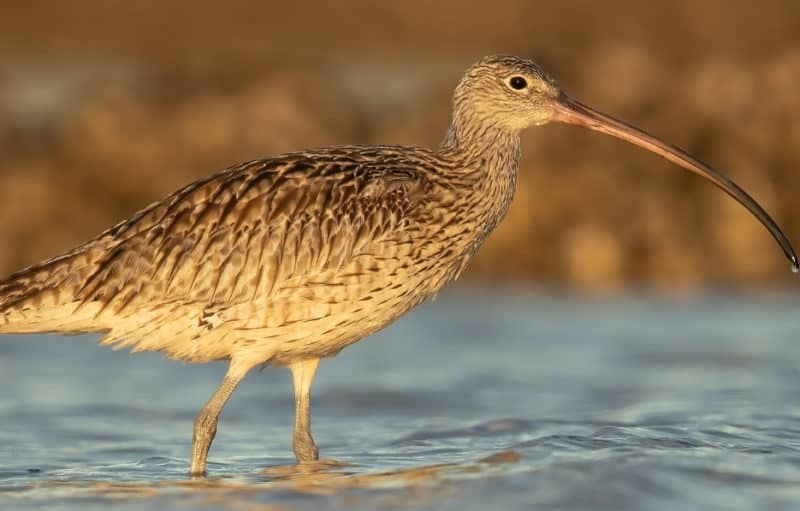PARK WATCH March 2021 |
Campaigner Jordan Crook explains how poorly planned mountain bike tracks risk the survival of an exceptionally rare species.
From the outset, it needs to be stated clearly that Victorian National Parks Association supports mountain bike riding on public land when and where it is planned in an ecologically and culturally sensitive and respectful way.
This means illegally built tracks should be removed and damaged areas restored. Any new tracks should be planned to avoid areas of high conservation value, threatened species habitat, and areas of cultural importance for First Nations people.
Many of these ecological and culturally important sites are not obviously visible to most people. This alone shows the importance of including local Friends and volunteer groups, Traditional Owners and local land managers when planning new mountain bike tracks.
When planned properly and managed effectively, mountain bike riding can be a lower impact activity in natural areas.
There are plans for a ‘Warburton Mountain Bike Destination’ project that includes 44 trails spanning 186 kilometres. In their current form, these mountain bike tracks, particularly the Trail 1/Drop-a-K, cannot be supported by the VNPA due to the significant risk posed to nature.
Impacts on the Yarra Ranges National Park
A very large section of the planned ‘Warburton Mountain Bike Destination’ project is within the Yarra Ranges National Park.
Land designated as national park under the National Parks Act 1975 is required to have Management Plans as a strategic framework that governs the development and delivery of all management programs and actions within the national park, consistent with the objectives of the Act.
The Yarra Ranges National Park is also assigned the International Union for the Conservation of Nature (IUCN) Category II (National Parks): the United Nations List of National Parks and Protected Areas. Category II areas are managed primarily for ecosystem conservation and appropriate recreation. The Yarra Ranges National Park is also recognised as a site of national and state zoological and botanical significance, as it contains a high number of rare and threatened flora, fauna and vegetation types, including extensive, undisturbed areas of Cool Temperate Rainforest and Wet (Mountain Ash) Forest, old-growth forests, threatened Leadbeater’s Possum, and critically endangered Mount Donna Buang Wingless Stonefly.
The mountain bike tracks in their current proposed form will impact heavily on the national park’s values and threatened species habitat the area was protected for.
Impacts on Cool Temperate Rainforest
There are 2.5 kilometres of proposed mountain bike track planned to go through the ancient Cool Temperate Rainforest.
The construction of any track through and/or adjacent to Cool Temperate Rainforest further compromises this vegetation community listed as threatened under the Flora and Fauna Guarantee Act 1988 (FFG Act).
New tracks in areas that have been previously undisturbed will cause significant damage to the dominant Myrtle Beech trees from “lopping” of branches during track construction and wounding of roots and trunks. New tracks will also increase the possibility of the tree-killing fungus Myrtle Wilt entering into these ecosystems.
We believe this is contrary to the specified protections for Cool Temperate Rainforest required by the FFG Act listing.
Impacts on large, old trees and habitat
New tracks in previously undisturbed areas will also impact on large, old and hollow-bearing trees, which will then have subsequent impact on hollow-dependent wildlife species such as the threatened Leadbeater’s Possum, due to declined tree health and habitat structure.
Many of the tree species within the area of the proposed tracks including Mountain Ash, Alpine Ash, and Snow Gum are highly susceptible to soil compaction, root damage, and changes in hydrology.
The spread of the tree-killing pathogen Cinnamon Fungus (Phytophthora cinnamomi) is also highly concerning, and not adequately addressed by the proposal.
Tracks should be realigned outside of any Leadbeater’s Possum habitat and one kilometre away from known nesting sites. They should also be located outside of the Structural Root Zone and Tree Protection Zone of hollow-bearing trees both alive and dead or trees with a two-metre plus diameter at breast height (DBH).
Mount Donna Buang Wingless Stonefly
The proposed Trail 1/Drop-a-K will directly dissect Mount Donna Buang Wingless Stonefly habitat.
This exceptionally rare species is found only within its 1-3 square kilometre home range on the summit of Mount Donna Buang within the Yarra Ranges National Park. It has recently been reassessed as critically endangered under the FFG Act.
Its tiny home range makes it highly susceptible to changes in its habitat structure and function, local hydrology, as well as pollution. What can be seen as a once-off event could lead to sustained and rapid decline in the species.
Mount Donna Buang Wingless Stonefly is one of the two species of wingless stoneflies found in Australia and this unique and unusual insect is of great interest to science and our understanding of invertebrates.
The survival of this species is at real risk from the ‘Warburton Mountain Bike Destination’ proposal in its current state, adding to the pressures it is already under from climate change, road run-off and invasive species.
All this does not mean there should be no mountain bike tracks in the area, but that these tracks should be better planned away from these high conservation value areas.
The term balance is often thrown around during conversations and debates about the conservation of natural areas and threatened species habitat.
There are 350,000 hectares of public land outside of the protected areas that could instead be considered for new mountain bike tracks; rather than the relatively small (only 170,000 hectares) national parks estate preserved and cherished by the Victorian people for the conservation of native flora and fauna and the natural environment.
Did you like reading this article? Want to be kept up to date about this and other nature issues in Victoria? Subscribe to our email updates.
You can also receive our print magazine Park Watch four times a year by becoming a member. Find out more here.
